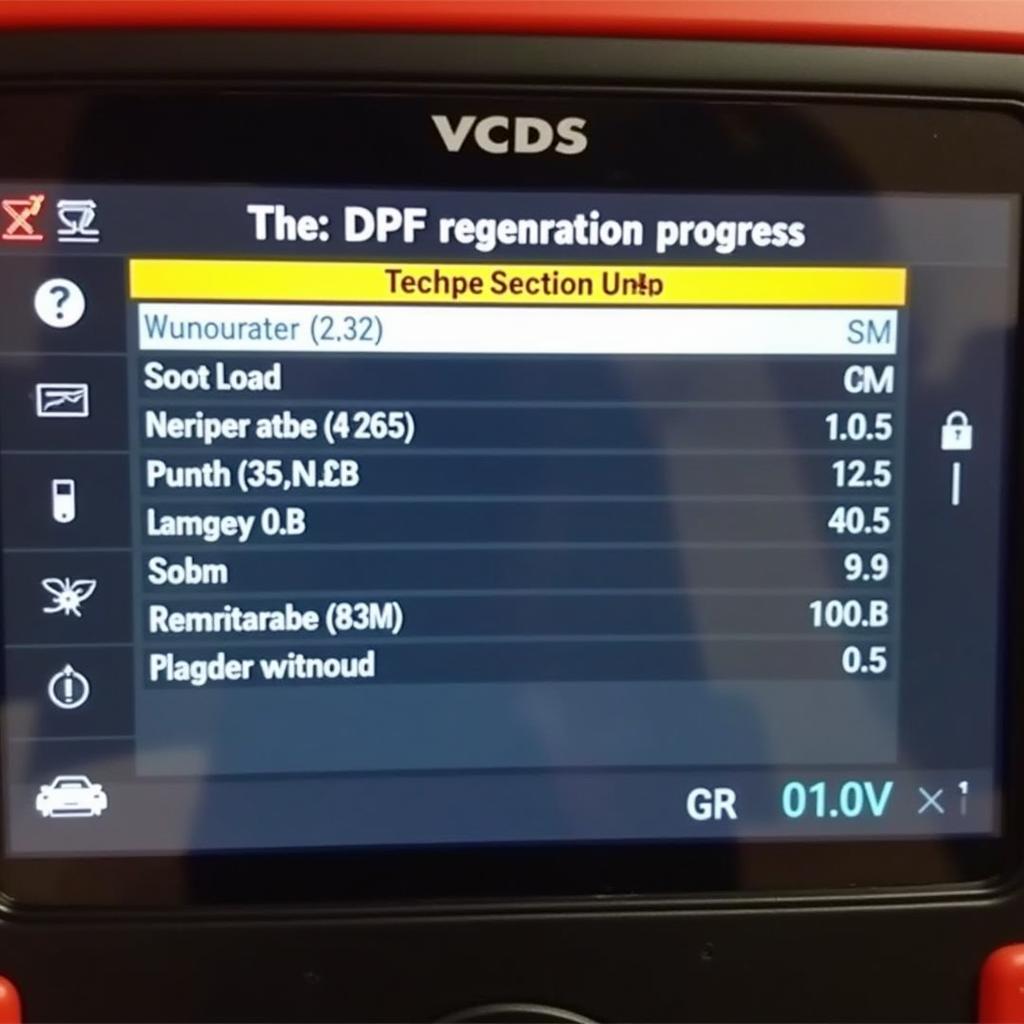Your cart is currently empty!

VW Passat B6 DPF Regeneration with VCDS: A Comprehensive Guide
Performing a VW Passat B6 DPF regeneration with VCDS can seem daunting, but with the right knowledge and tools, it’s a manageable process. This guide provides a step-by-step walkthrough for using VCDS to regenerate your DPF, helping you avoid costly repairs and maintain optimal performance.
Understanding DPF Regeneration in your VW Passat B6
The Diesel Particulate Filter (DPF) in your VW Passat B6 plays a crucial role in reducing harmful emissions. It traps soot particles from the exhaust gases, preventing them from entering the atmosphere. Over time, the DPF becomes saturated with soot, requiring a regeneration process to burn off the accumulated particles. There are two types of regeneration: passive and active. Passive regeneration occurs automatically during highway driving at higher speeds. Active regeneration, however, requires specific conditions or manual intervention, often using diagnostic tools like VCDS.
Why VCDS for DPF Regeneration?
VCDS (Vag-Com) is a powerful diagnostic software specifically designed for Volkswagen Audi Group vehicles. It allows you to access and control various vehicle systems, including the DPF. Using VCDS for DPF regeneration offers several advantages: precise control over the process, the ability to monitor key parameters, and identify potential issues hindering regeneration. Furthermore, you can initiate a forced regeneration when necessary, preventing DPF clogging and potential damage.
Step-by-Step Guide to VW Passat B6 DPF Regeneration with VCDS
Before starting the regeneration process, ensure your VW Passat B6 meets the necessary conditions: at least a quarter tank of fuel, engine oil level within the specified range, and no fault codes related to the DPF system.
- Connect your VCDS interface to the vehicle’s OBD-II port and launch the software.
- Select “Select Control Module.”
- Choose “Engine” (01-Engine).
- Go to “Basic Settings” (04-Basic Settings).
- Select “Group 078” for DPF regeneration.
- Click “Go!” to start the regeneration process. The engine will run at a higher RPM and the cooling fans may activate.
- Monitor the regeneration progress displayed on the VCDS screen. The process typically takes 20-30 minutes.
- Once complete, the soot load value should be significantly reduced.
Troubleshooting Common Issues
Sometimes, the DPF regeneration process might encounter issues. Here are some common problems and their solutions:
- Regeneration not starting: Check for any fault codes related to the DPF system. Address these codes before attempting regeneration again.
- Regeneration interrupted: Ensure sufficient fuel and that the vehicle remains stationary during the process.
- Incomplete regeneration: A partially clogged DPF might require a professional cleaning or replacement.
 VCDS DPF Regeneration Screen
VCDS DPF Regeneration Screen
“Regular DPF regeneration is essential for maintaining the health of your diesel engine,” advises John Miller, ASE Certified Master Technician. “Ignoring DPF issues can lead to costly repairs down the line.”
Maintaining your DPF after Regeneration
After a successful DPF regeneration, it’s crucial to adopt driving habits that promote passive regeneration. Regular highway driving at higher speeds helps prevent soot buildup and reduces the need for frequent active regenerations. Avoid prolonged idling and short city trips, as these can contribute to DPF clogging.
“Using the right fuel and oil also plays a vital role in DPF longevity,” adds Emily Carter, Automotive Engineer specializing in emissions control. “Low-quality fuel and oil can accelerate soot accumulation and hinder the regeneration process.”
Conclusion
Performing a VW Passat B6 DPF regeneration with VCDS is a straightforward process when armed with the correct information and tools. This guide provides the steps and insights necessary to maintain a healthy DPF, ensuring optimal performance and longevity of your vehicle. If you have any questions or require assistance, please don’t hesitate to contact us at +1 (641) 206-8880 and our email address: vcdstool@gmail.com or visit our office at 6719 W 70th Ave, Arvada, CO 80003, USA. Visit vcdstool for further information on VCDS.
FAQ
- How often should I perform a DPF regeneration with VCDS? It’s best to perform an active regeneration only when necessary, as indicated by warning lights or fault codes. Regular highway driving should promote sufficient passive regeneration.
- Can I drive my car during DPF regeneration with VCDS? No, the vehicle must remain stationary during the active regeneration process.
- What are the signs of a clogged DPF? Common signs include reduced engine power, increased fuel consumption, and warning lights on the dashboard.
- Is it safe to perform DPF regeneration with VCDS myself? Yes, following the steps in this guide should allow you to safely perform the regeneration. However, if unsure, consult a qualified technician.
- What is the cost of a DPF replacement? DPF replacement can be expensive, ranging from several hundred to thousands of dollars depending on the vehicle and location. Regular maintenance and timely regenerations can help avoid this cost.
- What happens if I ignore DPF warnings? Ignoring DPF warnings can lead to reduced engine performance, increased emissions, and eventually, costly repairs or DPF replacement.
- Can I clean my DPF instead of replacing it? In some cases, professional DPF cleaning can restore its functionality, offering a more affordable alternative to replacement.
by
Tags:
Leave a Reply